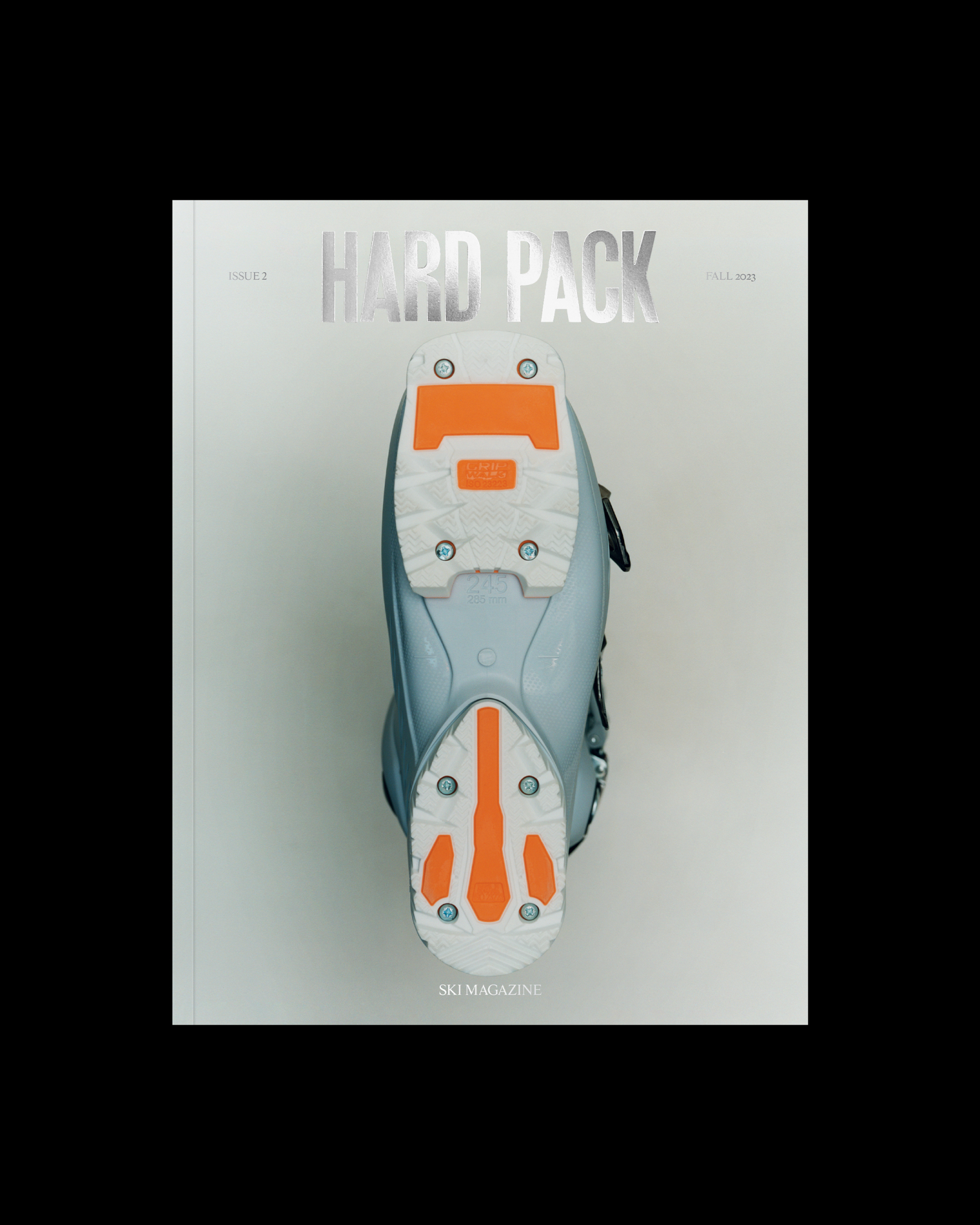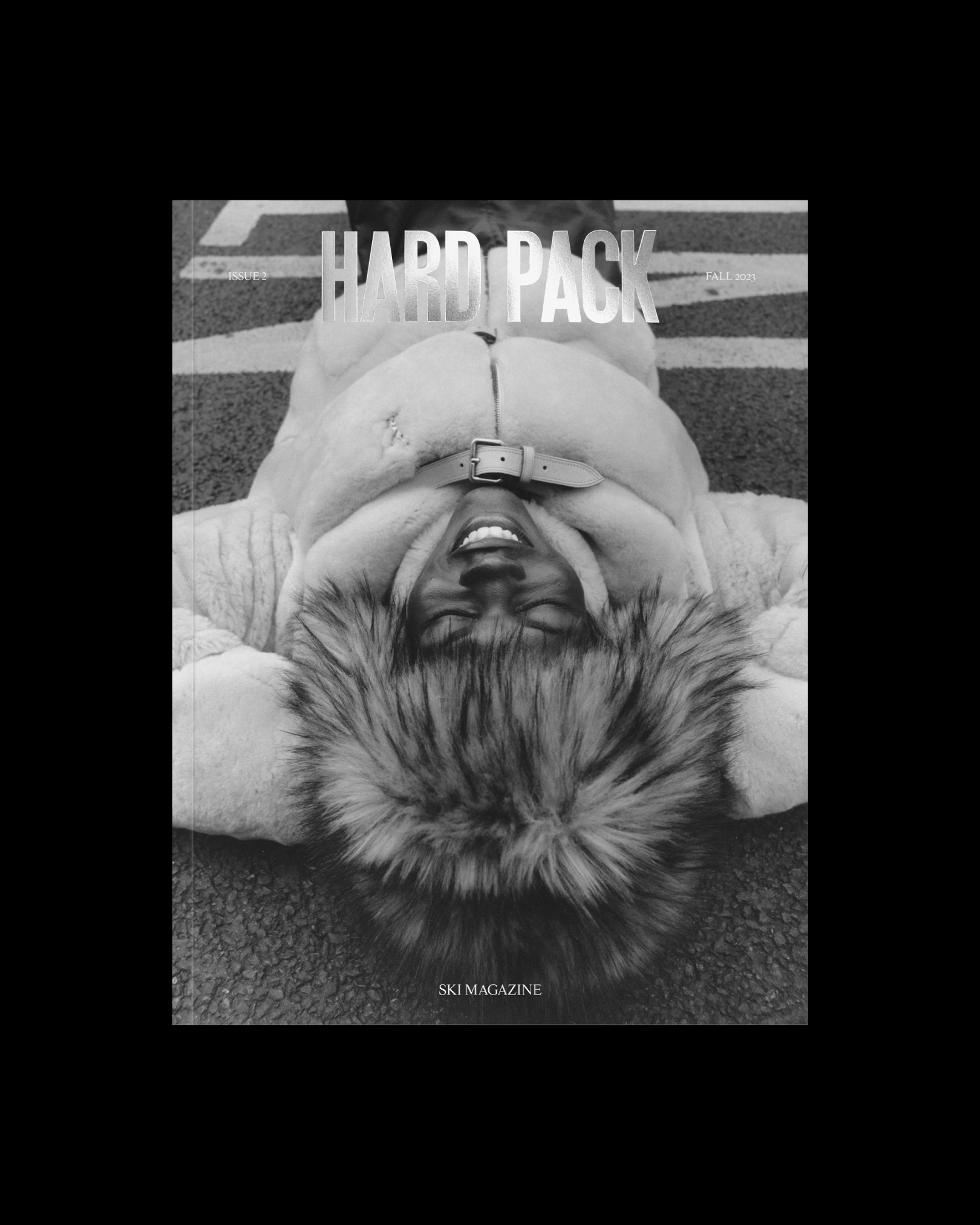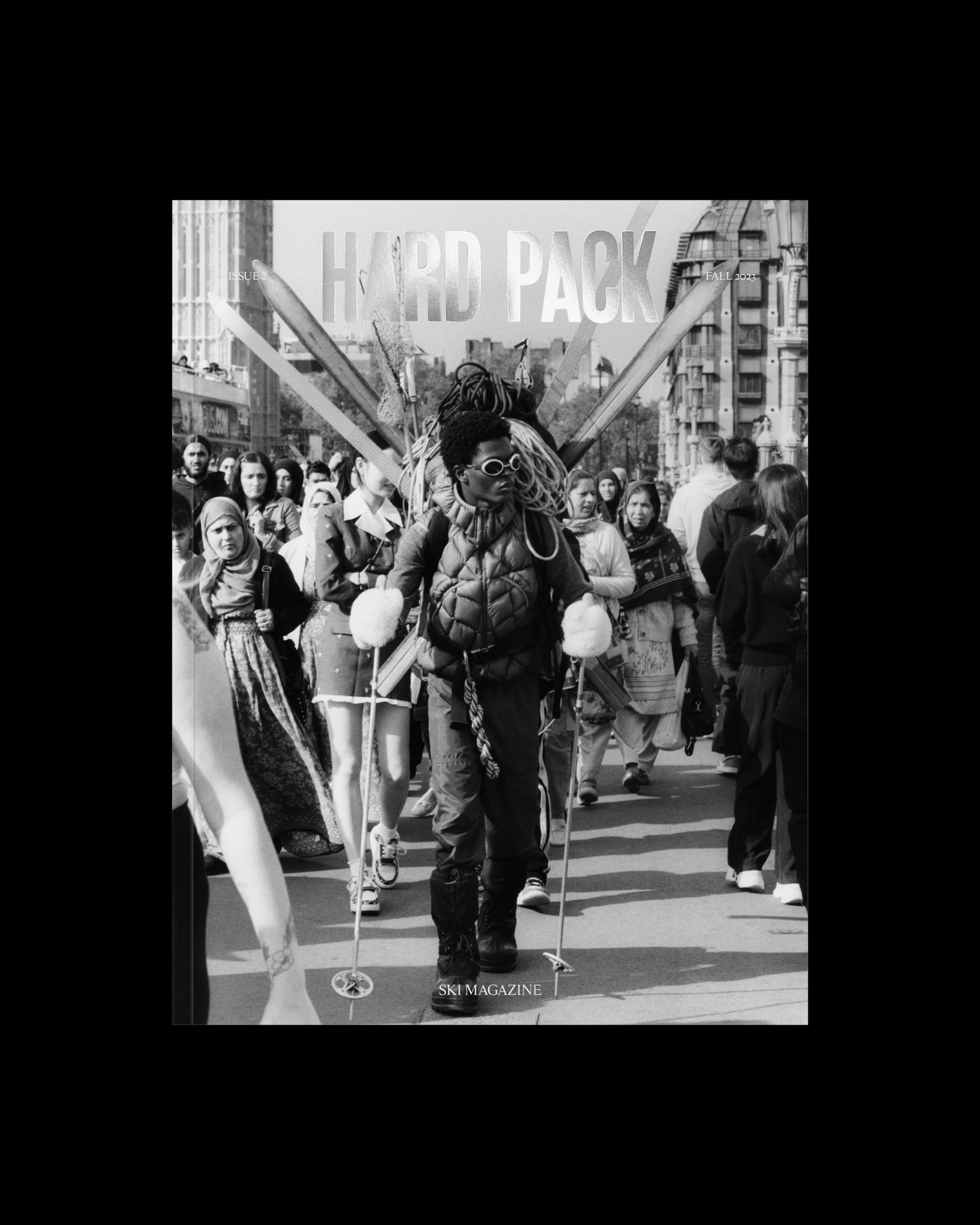Hark Pack Magazine
Editor and Founder: Zach Seely
Creative Direction and Design: SOON Services, Brendan Dunne, Ken Tokunaga
Fashion Director: Benoit Martinengo
Designer: Christian Sant
Heidi: What compelled you to start a niche print publication based around skiing?
Zach: There’s a simple reason for starting Hard Pack. I have a passion for skiing, images and words. In that sense, it sounded like a lot of fun.A more complex reason is because I was tired of the images and media around skiing. To me, how the media had represented the sport felt stuck and ossified in a particular mode. For all the variety of the sport, why had the image of skiing felt so undifferentiated? The majority of media around skiing falls into two camps. The first camp comes from the perspective of an elite hobbyist. It focuses on apres ski, expensive gear, resort reviews, and pricey hotels. The second camp comes from the perspective of a ski bum. It focuses on lots of powder, steep lines and probably some Grateful Dead vibes.
I have nothing against these two images, but they are not my experience of the sport. There was an opportunity to subvert those traditional images of skiing. The new image would be multi-dimensional, philosophical, and weird. It would embrace stories on architecture, fashion, design, poetry, fiction and criticism.I started Hard Pack to publish new voices whom you would not find in other ski and outdoor publications.
What makes this magazine different from endemic titles that have (may have) disappeared or gone exclusively digital?
Our title Hard Pack is both an homage to Powder which I grew up with but also a provocation. Hard pack snow, of course, refers to the type of snow no one celebrates but the majority of us ski on. We take that provocation as our editorial mandate to do things other titles wouldn’t do. So, of course, we will never publish resort reviews or rankings or a gear review. But we go beyond that. We want to develop a new lexicon for the sport. To do this, we prioritize photographers and writers outside of the ski industry. And by working with these types of creators we end up with stories not typically seen in a ski magazine. We also have a fashion component. Benoit Martinengo is our fashion director. And he leads the fashion editorials for each issue. By engaging with the sport through the lens of fashion, we are able to have a perspective on the rise of outdoor technical clothes in the fashion industry. Finally, we are a print-only publication. We invest a great amount of our resources in the print object. The creative directors, Ken Tokunaga and Brendan Dunne of SOON Services, design the magazine. Each layout is custom. We don’t have a set flatplan. We let the stories inform the design and vice versa. Each issue has multiple paper stocks and unique print inks. We want to create an object you want to hold onto.
How old were you when you first started sliding on snow?
Apparently my dad told my mom that if I can walk then I can ski. He put me on skis at the age of three and took me to Alta in Utah. Big and Little Cottonwood Canyons became my playground essentially. I was able to see the tram at Snowbird from my bedroom window.
In a few words, tell us what skiing is for you and how it has shaped you personally, and creatively…
I’m not super interested in over-romanticising the sport. Obviously, I’m obsessed with it, but it’s only one aspect of my life. Skiing is my favorite outdoor sport among many others like surfing and road cycling. Skiing is also an intellectual pursuit of mine. I’m always reading about it, seeking out poetry that mentions it, and finding cinema that references it. It’s a generous sport to think with. But it’s also an expensive hobby that is part of an industry that is complex and not always good to every stakeholder. That means I have some complicated feelings about the sport, as well.
How did launching Sandwich magazine inform this work, both creatively and through the nuts and bolts of business?
Sandwich magazine was a surprise. I was running a marketing team at a small food CPG company. We needed something to bring a bit of energy to a very crowded and challenging category. We had grown tired of producing food content for the algorithms. We were looking for content that was more in-depth and that mirrored our own passion. We had been big fans of Lucky Peach, the independent food magazine. We thought we could publish something similar. We ended up partnering with TCO out of London to bring it to life. We called it Sandwich. Its mandate is to publish overlooked aspects of food and culture. Each issue takes inspiration from the ingredients of a sandwich to talk about new stories. It blew up on social media. It did well at newsstands. Sold surprisingly well online. It became a viable independent magazine. From that I learned a lot about the magazine publishing world. It gave me great contacts with printers, distributors and retailers. Also, it gave me my first peek into the life of an editor.
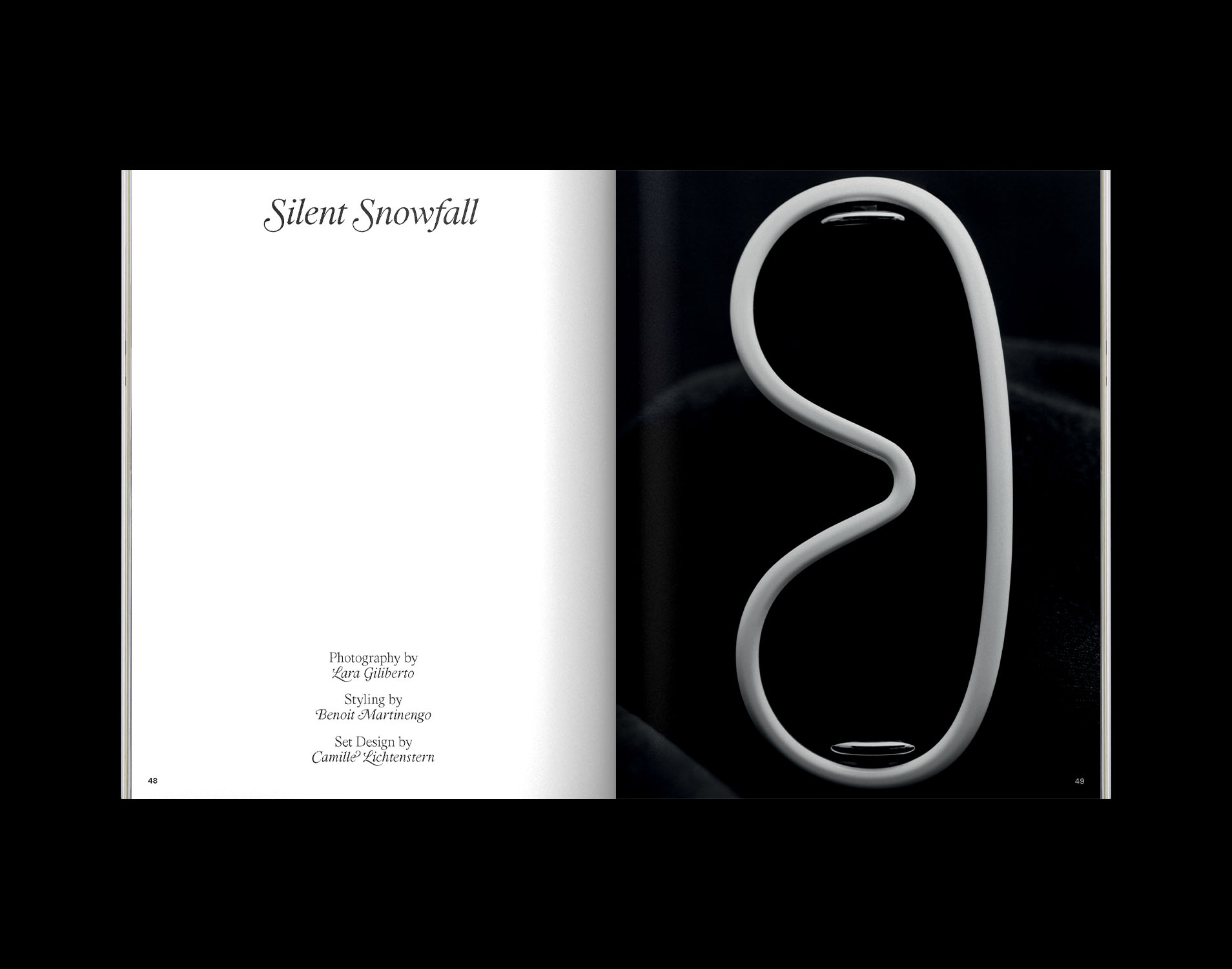

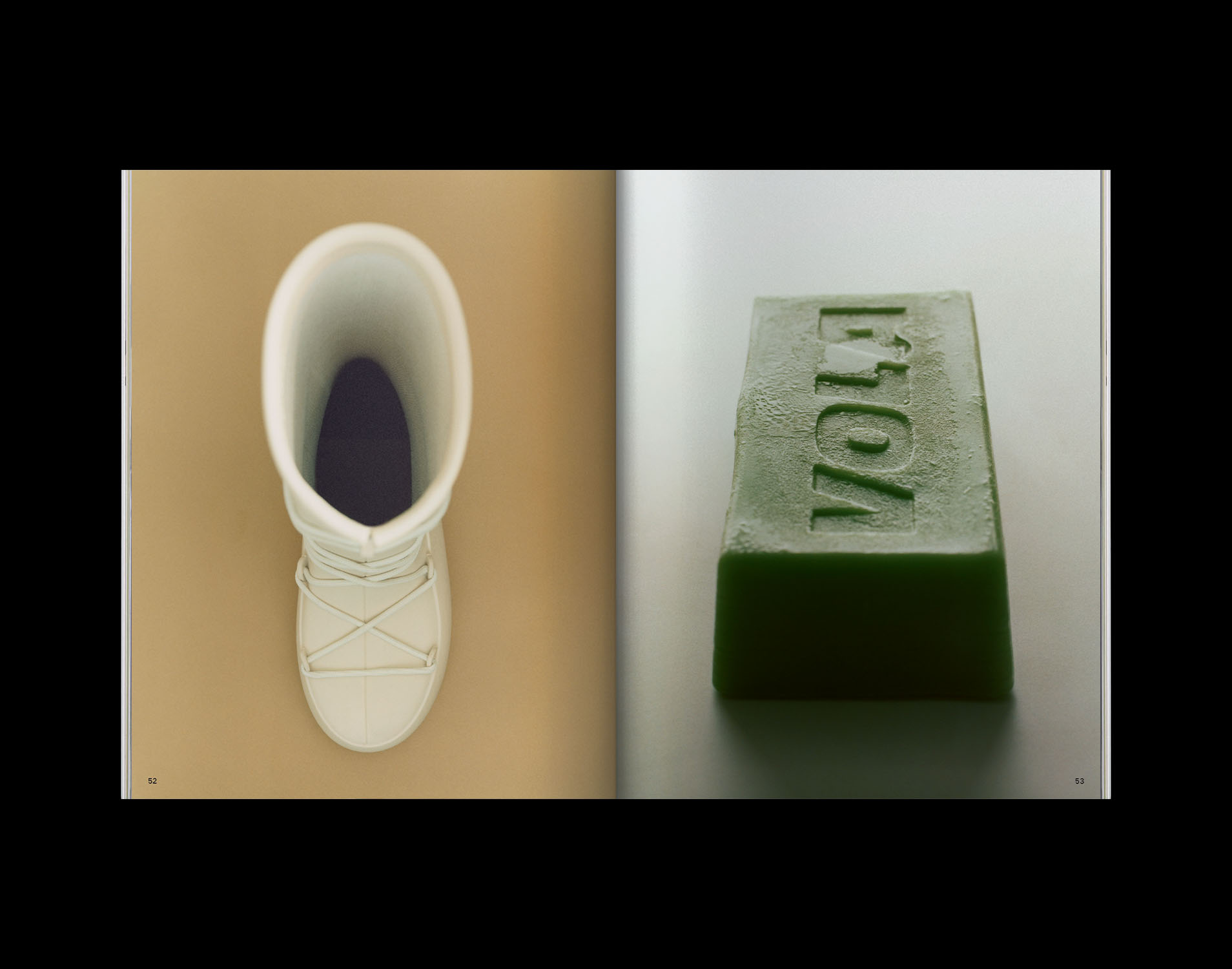
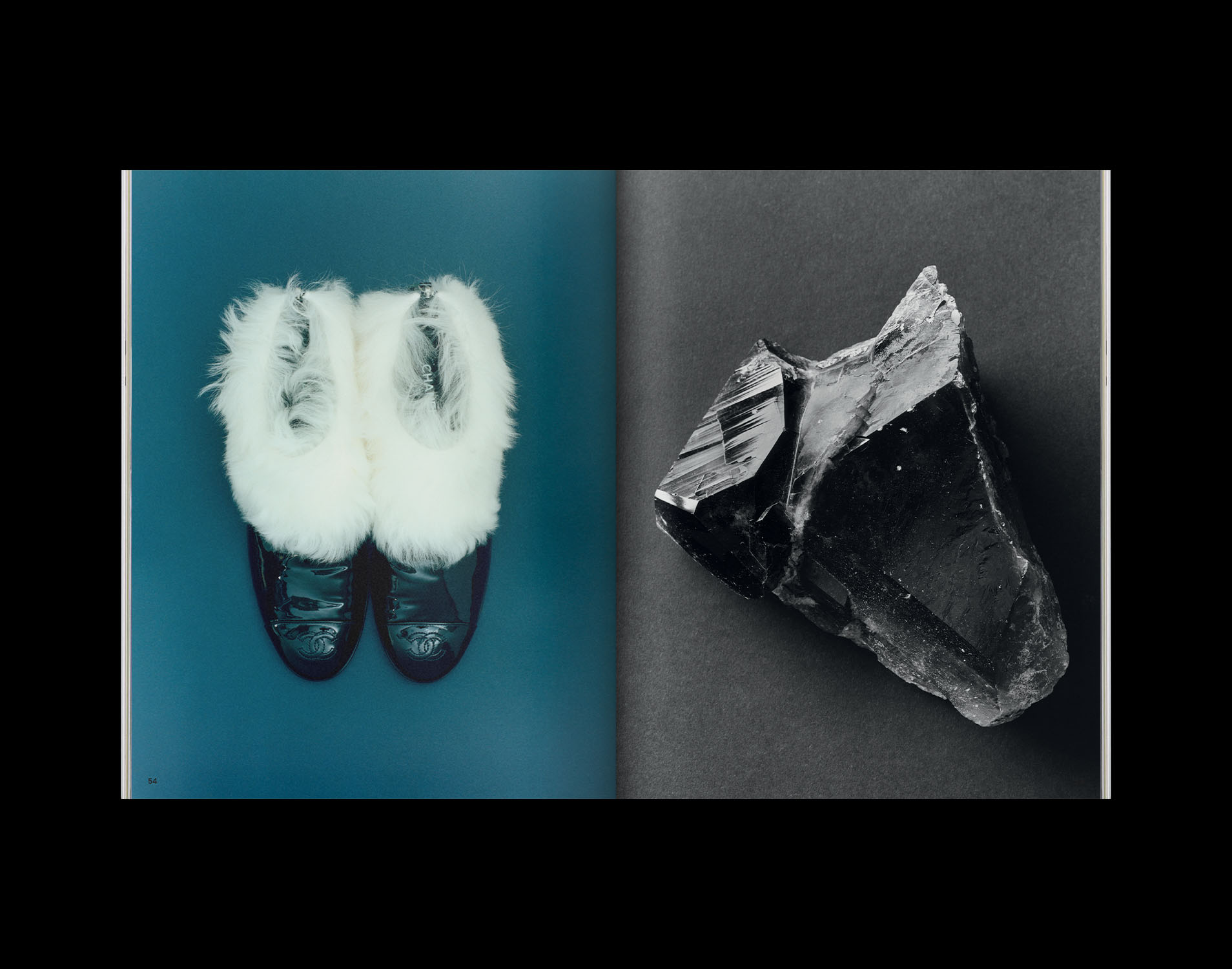
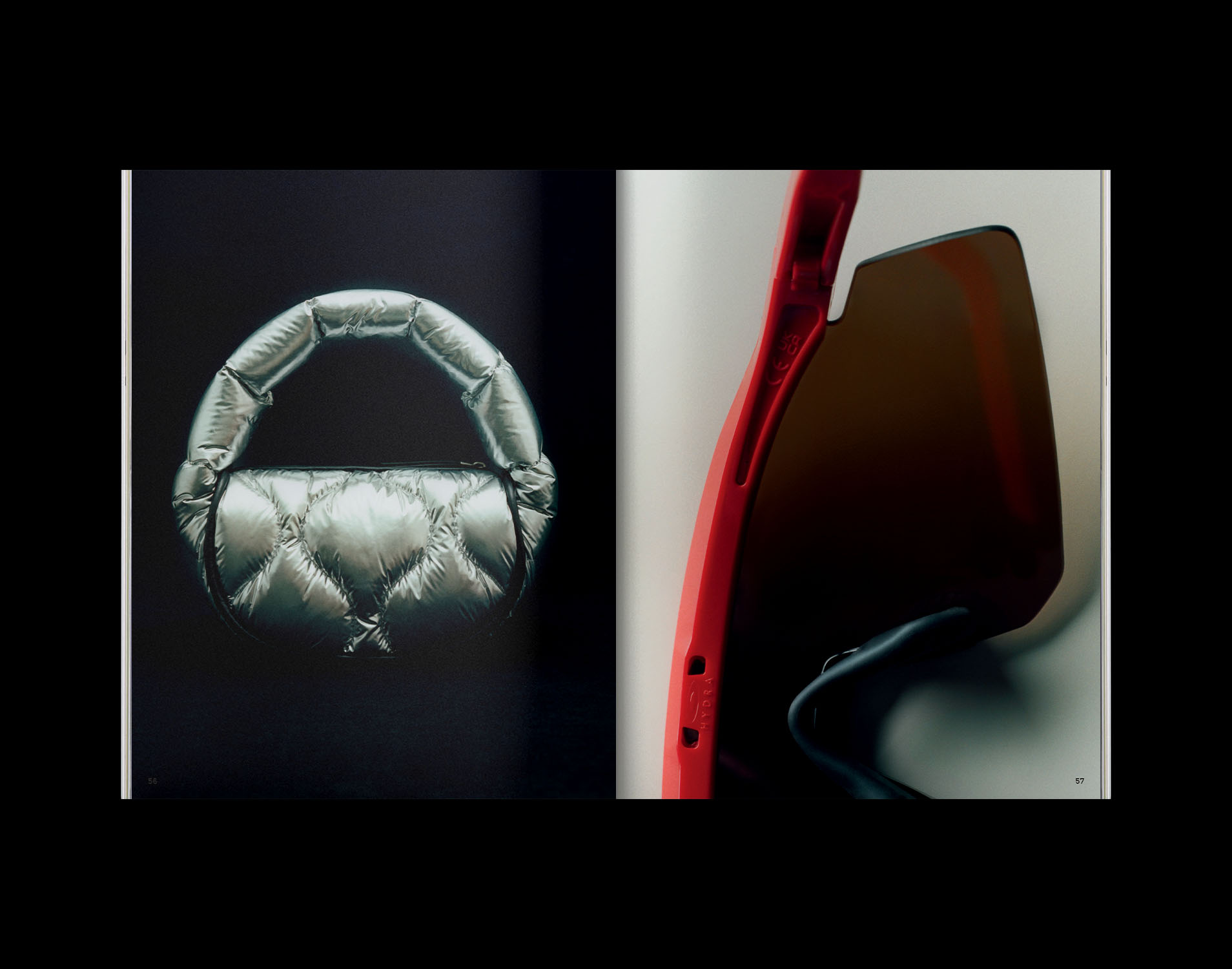

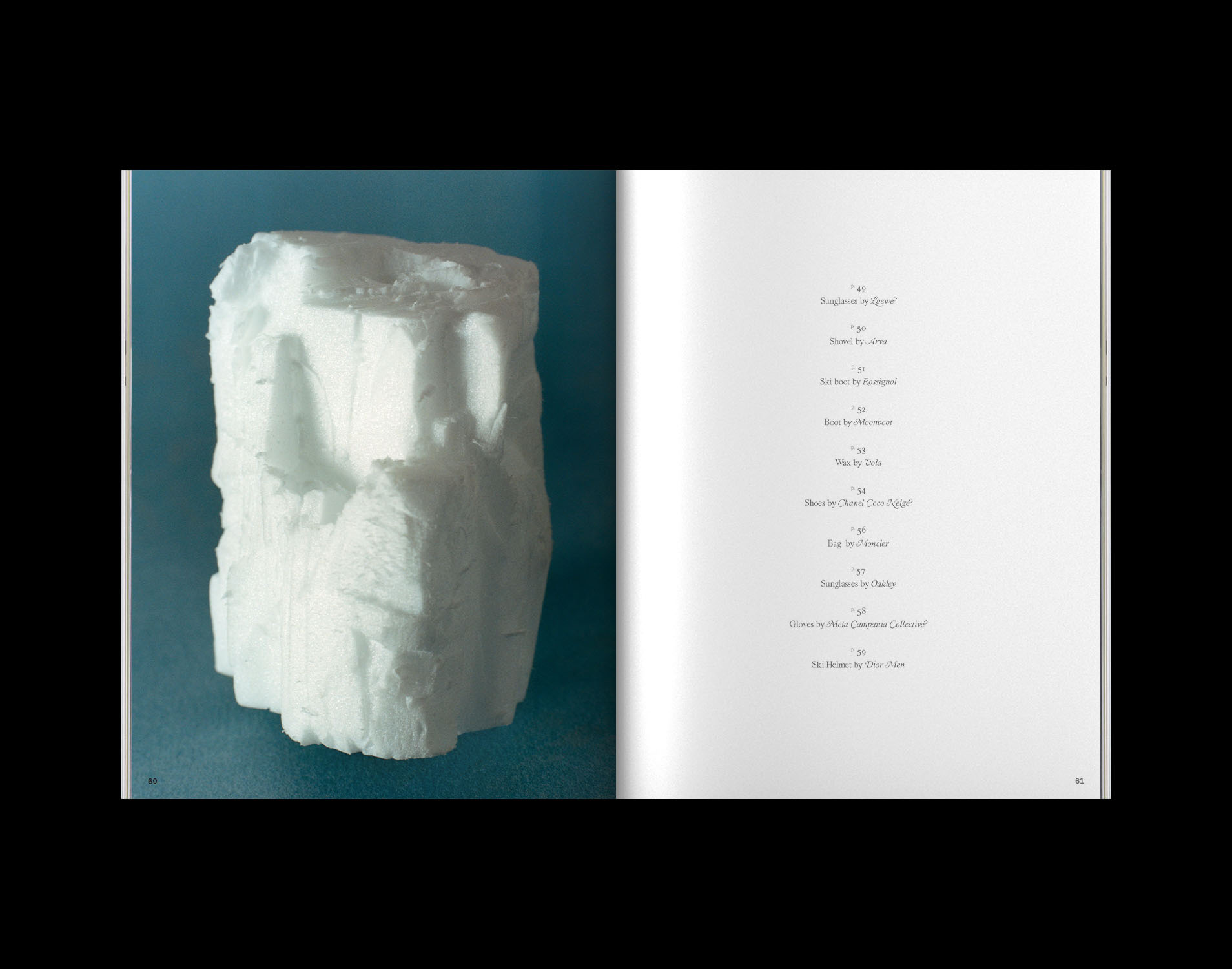
How are you trying to make the objects of skiing photographically arresting? Silent Snowfall by Lara Giliberto is gorgeous.
Well, one thing we are trying to do is bring in new voices to the sport. Lara’s work in issue two is one such example. Lara does incredible still life work working often with M Le magazine du Monde out of Paris. She collaborated with set designer Camille Lichtenstern for this work. What they achieved with “Silent Snowfall” is particularly gorgeous. They took ski objects like avalanche shovels, ski wax, and boots and paired them with high-fashion objects. That type of lens meant we’d be able to see a ski boot like never before. The idea of shooting a ski boot upside down is very simple but never done and that’s what they did. It’s quite the statement but hard to pull off. It takes an outside eye to achieve that. In main ways, this story is our response to the season-preview gear reviews that typical magazines publish. We happen to prefer to showcase these objects not as functional objects but as objects of high design.

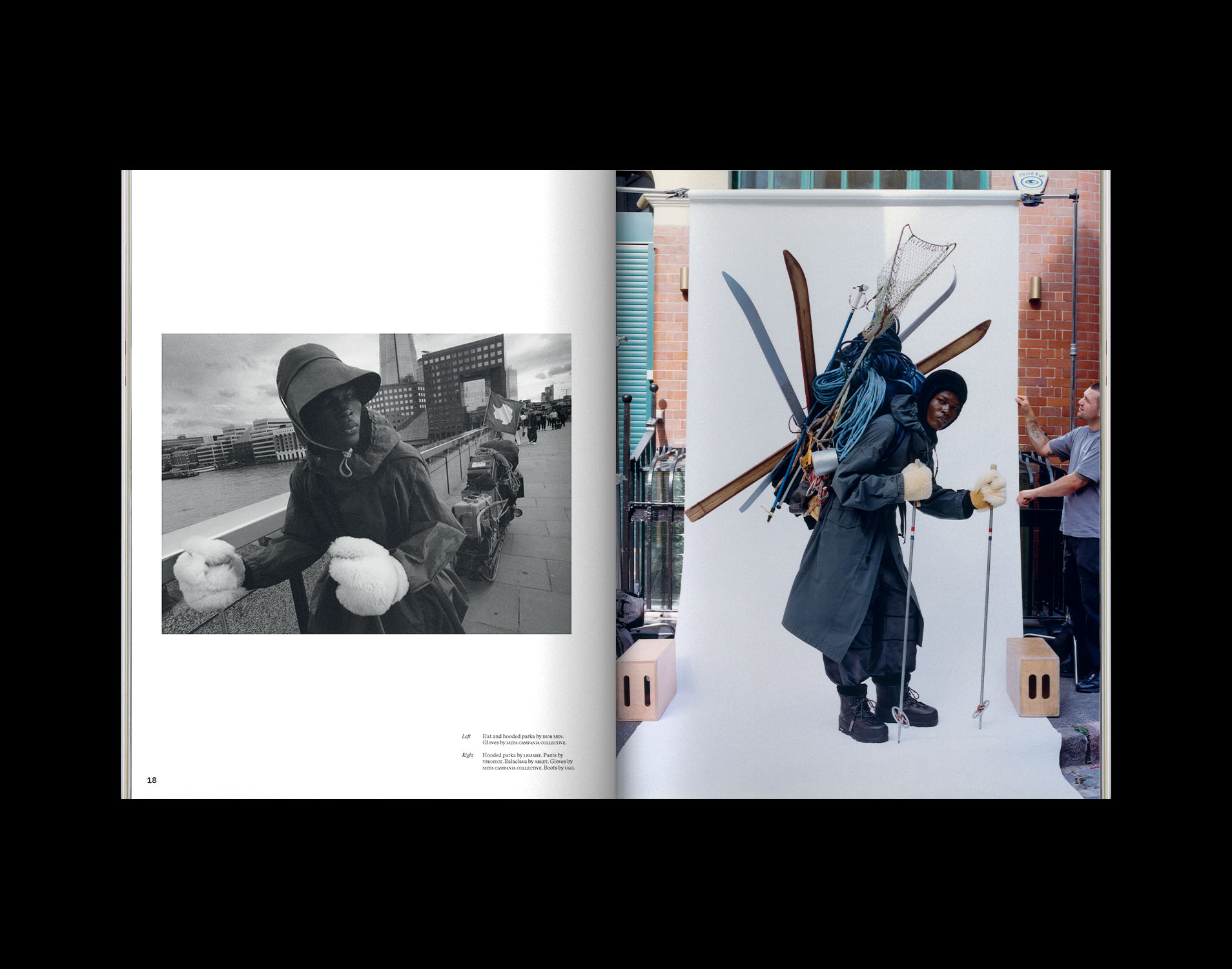
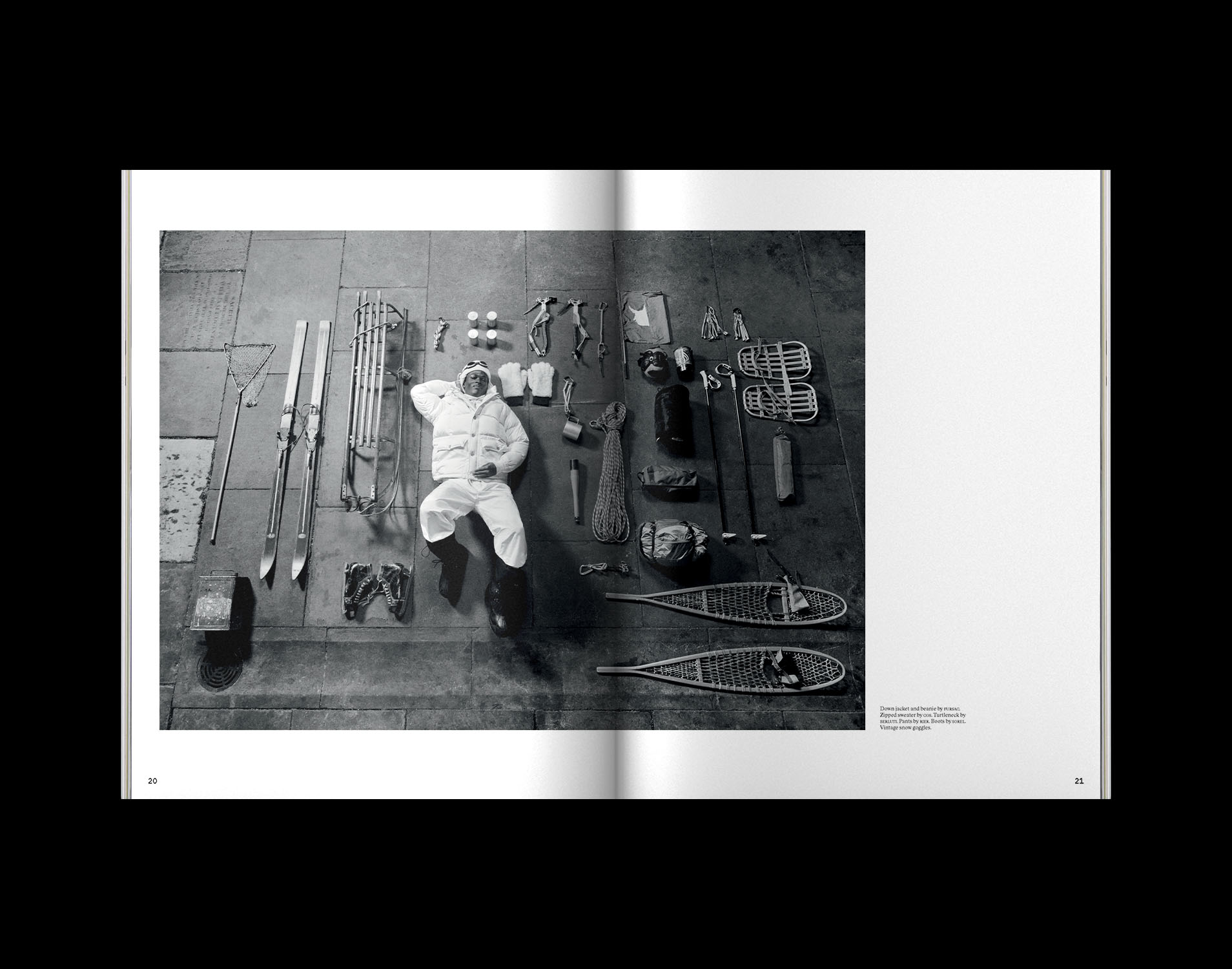
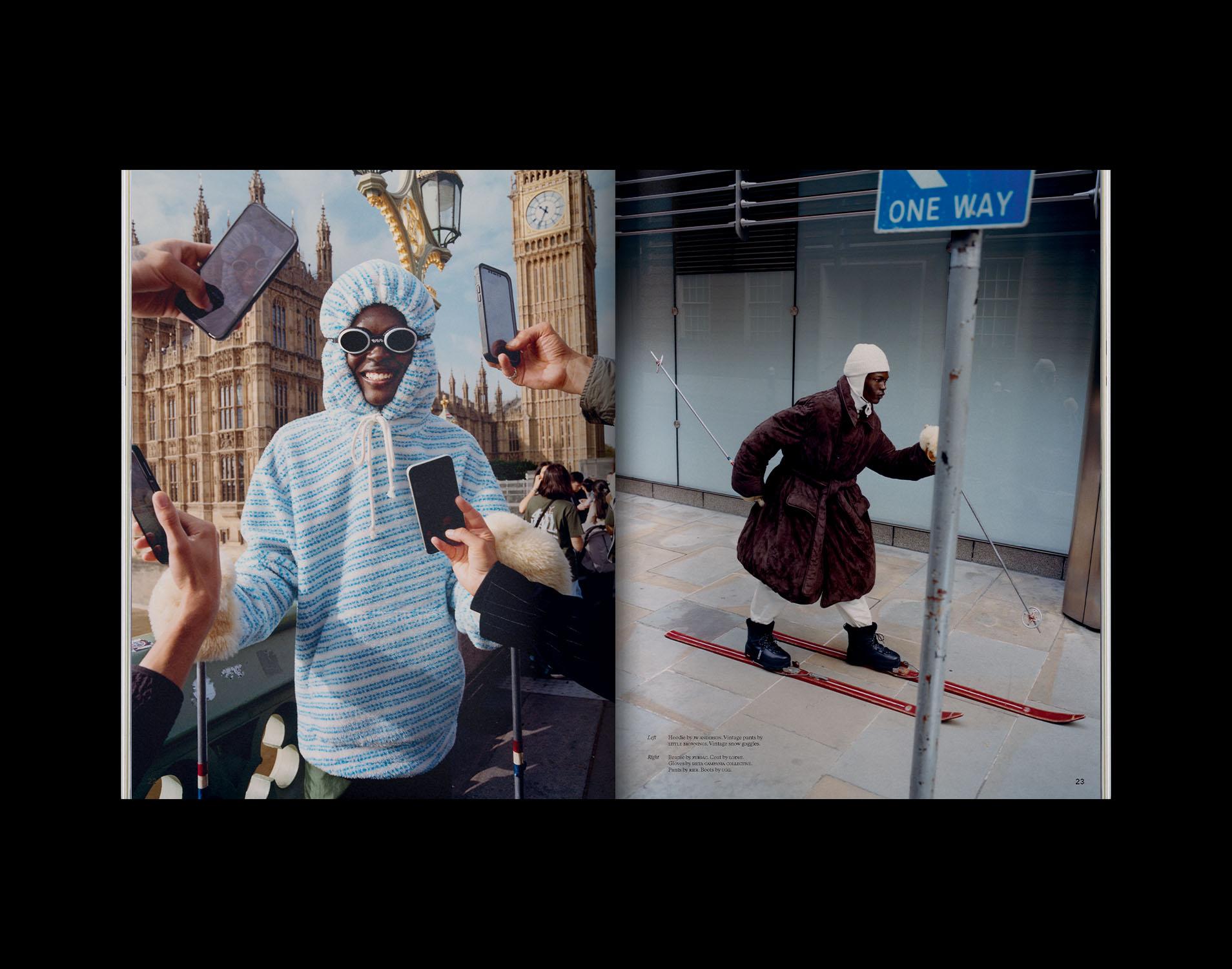


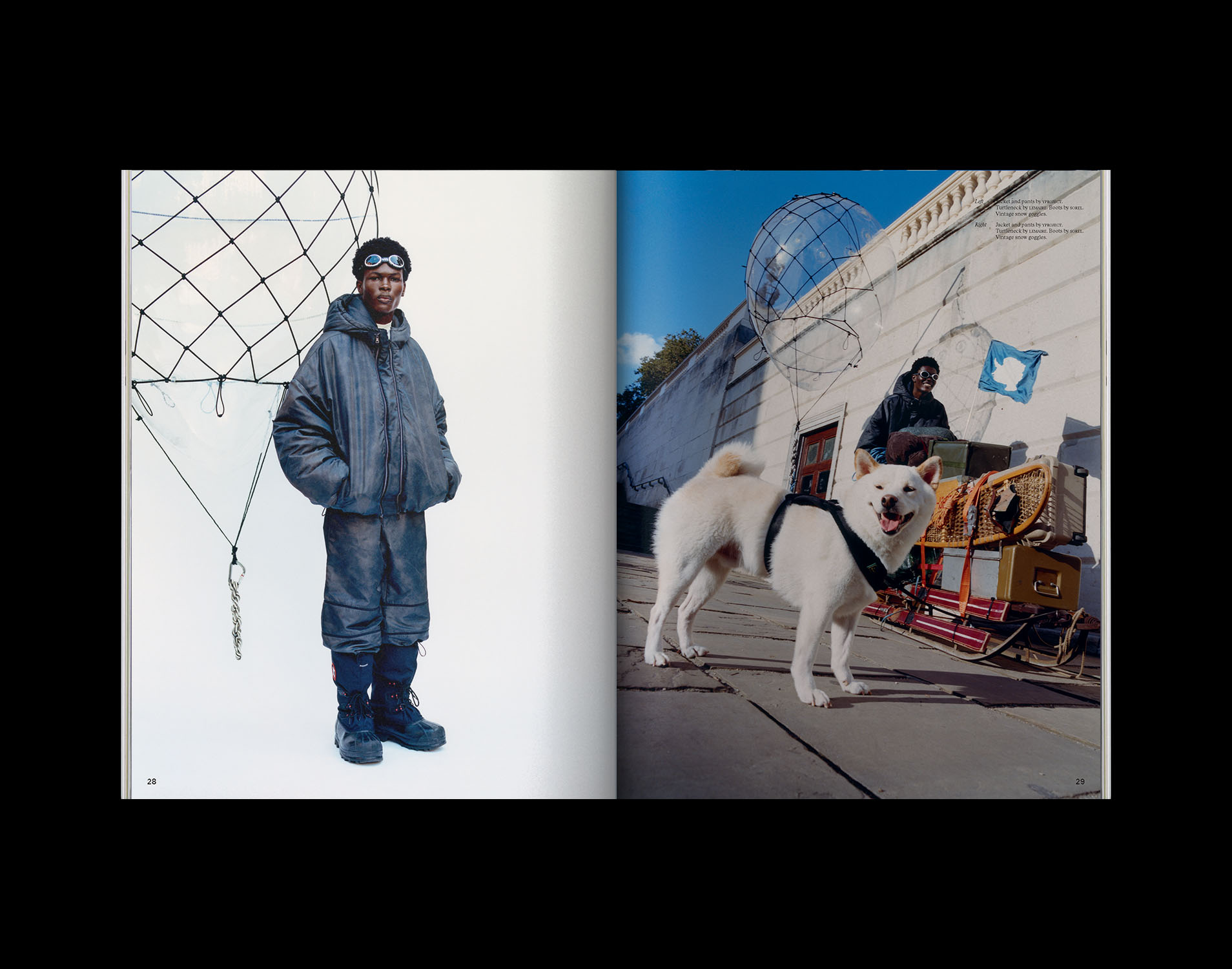
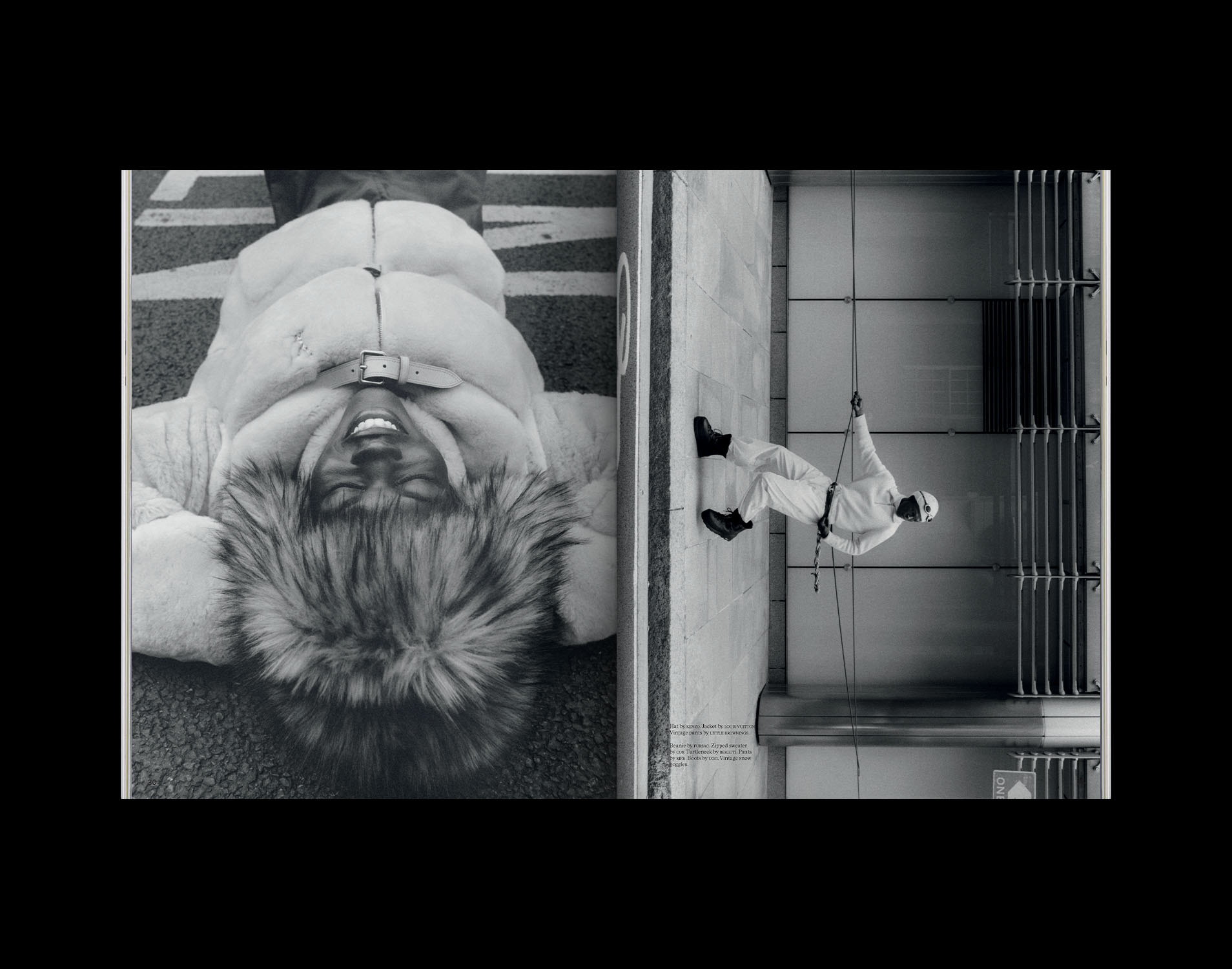
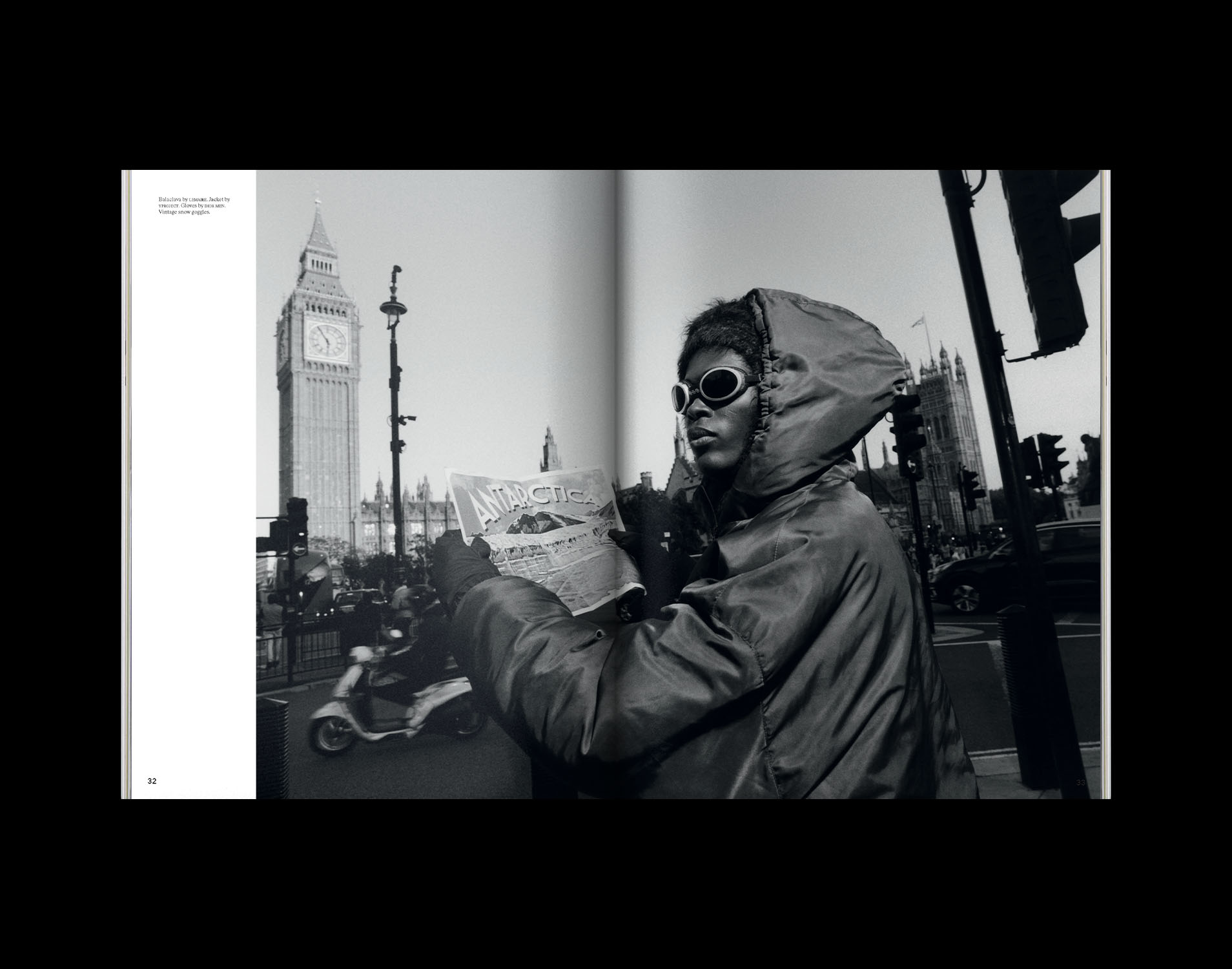
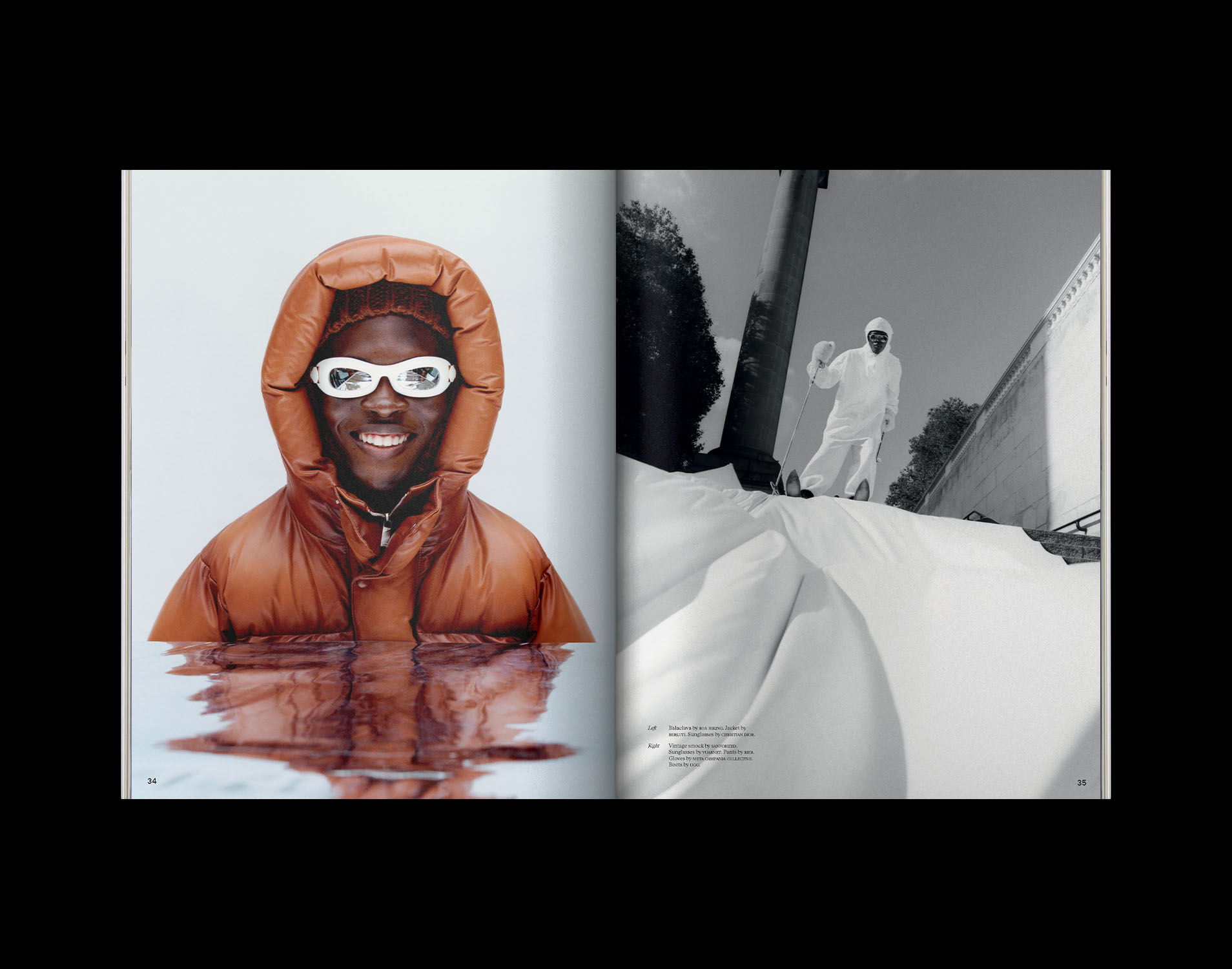
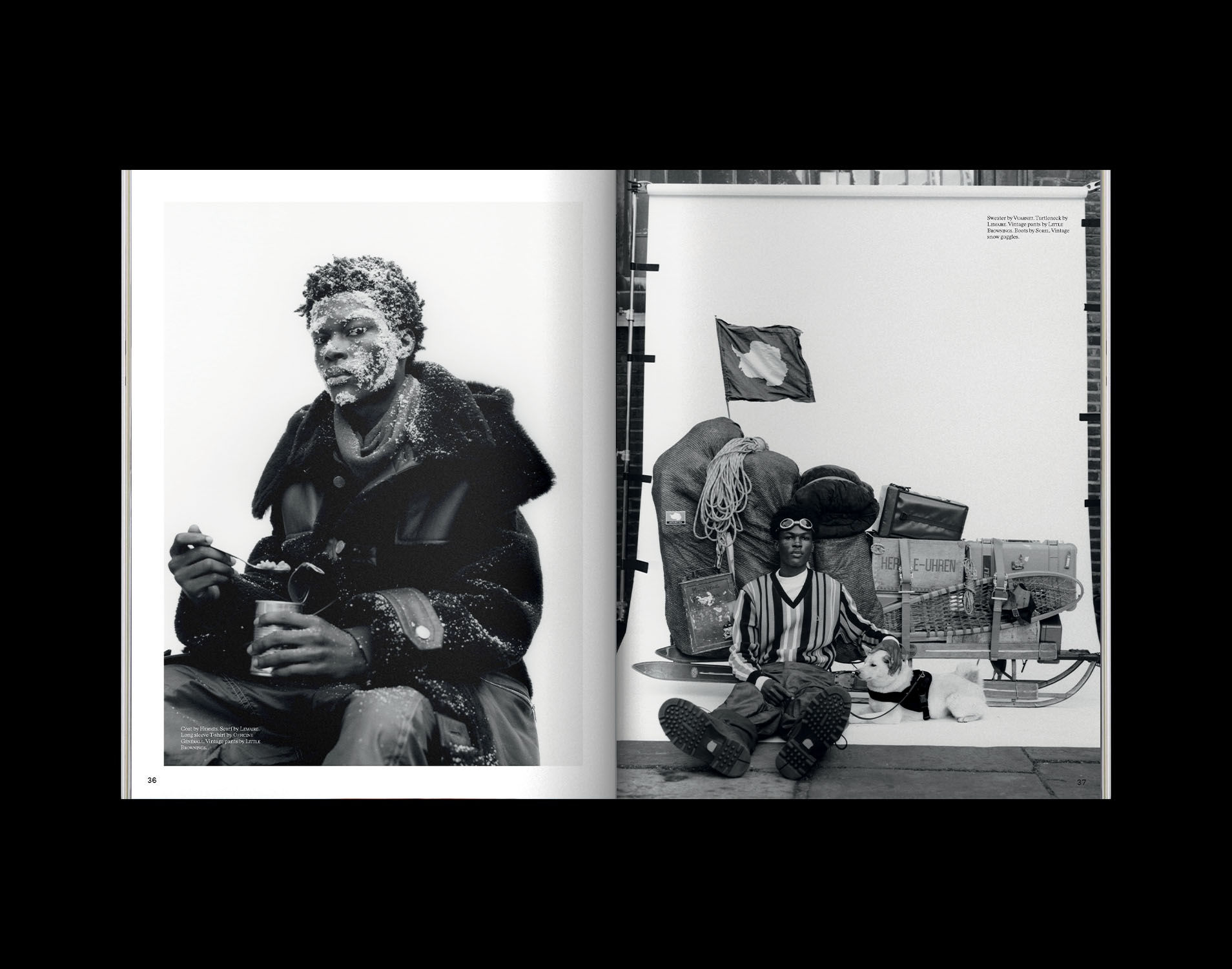
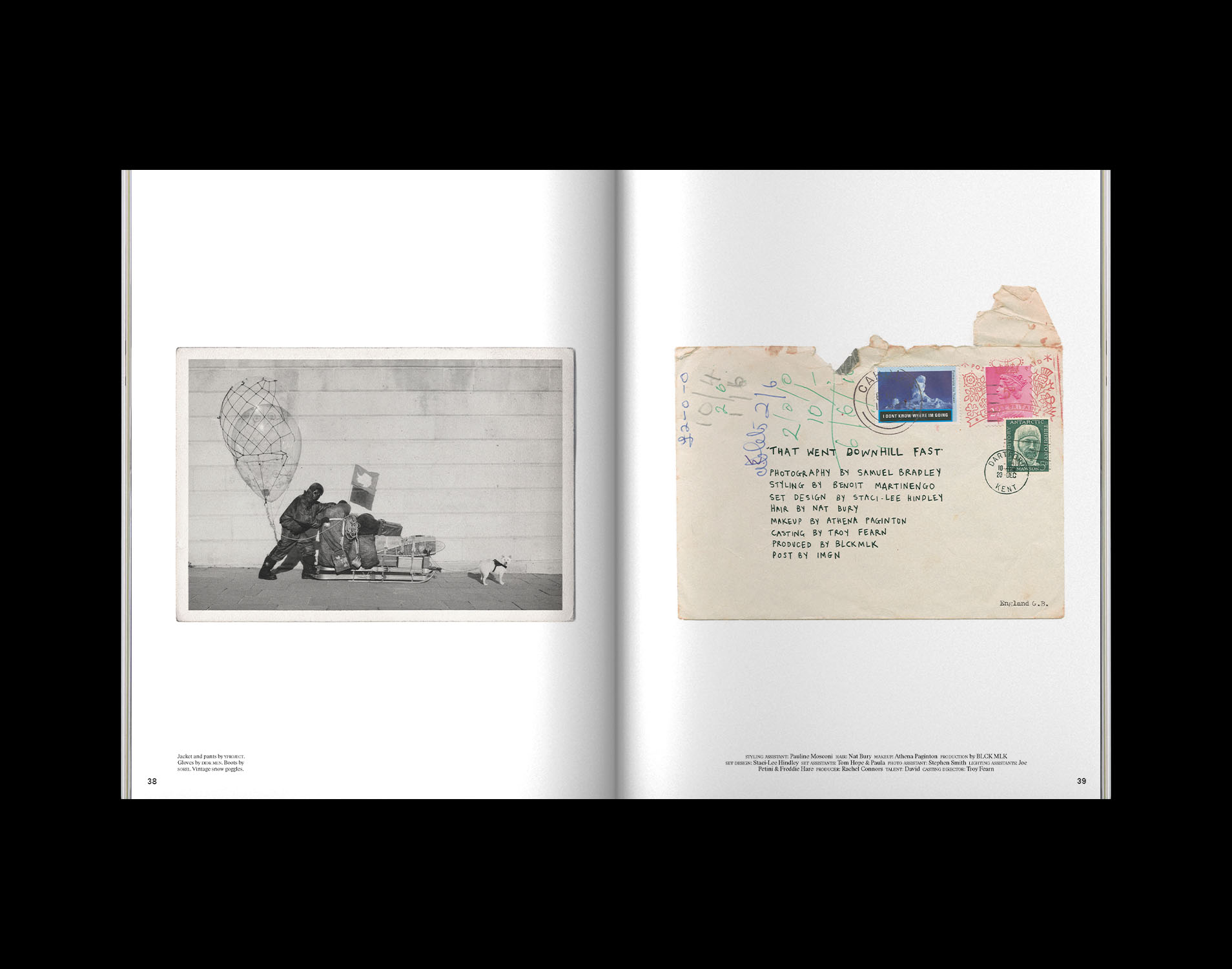
Matthew Hensen and his legacy were celebrated in the launch issue with the story “That Went Downhill Fast”. The project is beautifully photographed by Samuel Bradley and exquisitely styled by Benoit Martinengo. Tell me about the evolution of this project.
Well, Benoit is our fashion director and he knows Samuel Bradley. Samuel is one of the best fashion and editorial photographers around. Benoit approached Samuel about contributing, and Samuel was immediately interested. We had discussions about different stories. We ended up landing on something that Samuel could shoot in London. The inspiration came from Matthew Hensen, who was the first man to reach the North Pole. The historical photos of this explorer are stunning. It became a cool collaboration for Samuel and Benoit. Benoit had the challenge of recreating those looks with contemporary brands. They still had to feel modern though. What he achieved feels very timeless. That’s thanks to many of the brands like Roa Hiking and Lemaire. Samuel is able to fill the entire story with a sense of humor. That humor is a necessary component to this story. The skier, our model, has veered off course finding himself in the streets of London. Samuel has a great eye for capturing humor while creating stunning images. In the end, the story is one of my favorites we’ve ever created. It is a fun commentary on the entire streetwear meets gorpcore movement. It’s able to make a nice comment while remaining thoughtful, sophisticated and beautiful.
What are your hopes for this printed project?
I generally hope that we get to keep making them. I hope that enough people want to read and own them that it becomes a sustainable business. Very simple stuff, to be honest. It’s rare to put a print object out in the world in our era. It’s meaningful to connect with others who share a similar passion for the sport and for print. On the creative front I hope we continue to work with exciting photographers like Samuel and Lara. Doing editorial work is a labor of love, and it’s so meaningful to have photographers who want to work with you. And, finally, I hope we are making a meaningful change to the ski industry and the way it portrays itself. Even if the impact is small, we hope we are widening the scope of the sport. We hope to make it accessible to people who have never picked up a ski magazine before.
What surprised you the most, now that you’re well into your 3rd issue?
Honestly, what surprised me the most is that we got so many inbound requests from photographers and writers asking to contribute after only our first issue. It’s a small thing but the response from the photo community has been special.
Any advice for anyone who is launching a print magazine?
Reach out to the editors of your favorite magazines and take them out for coffee. I find that the community is all about support. I’ve received so much help from countless industry veterans to newcomers.
How can photographers get involved in the magazine?
Send us a note at info@hardpackmagazine.com
